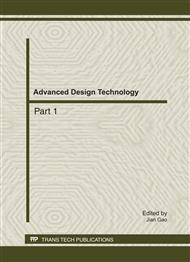p.2146
p.2152
p.2161
p.2168
p.2173
p.2180
p.2187
p.2191
p.2195
Preparation and Biocompatibility of Nanoscaled La/Ag/HAP Powder
Abstract:
The lanthanum-silver doped hydroxyapatite (La/Ag/HAP) powder was prepared by a coprecipitation way. Its microstructure, phase composition and thermostability were investigated by means of X-Ray diffraction, scanning electron microscopy, and Fourier Transform Infrared. The antibacterial properties against E.coli and S.Aureus were detected using a minimum inhibitory concentration method. The biocompatibility was confirmed by cell culture of osteoblasts of rat cranium. Results show that the investigated La/Ag/HAP powder exhibited the features of typical HAP phase in the experimental temperature, and its shape was needle-like with a diameter of 50~80 nm and a length of 300~500 nm. It is of a good biocompatibility and is more stable at high temperature, and is also a stronger antibacterial agent than pure HAP powders.
Info:
Periodical:
Pages:
2173-2179
Citation:
Online since:
August 2011
Authors:
Price:
Сopyright:
© 2011 Trans Tech Publications Ltd. All Rights Reserved
Share:
Citation:


